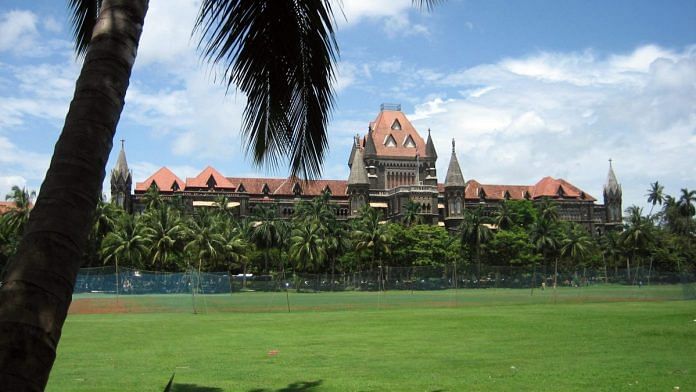The Bombay High Court passed an interim order that stayed Rules 9(1) and (3) of the Information Technology Rules, 2021, on 14 August. These provisions required digital media, which includes digital news publishers, as well as online curated-content platforms such as Amazon Prime and MX Player, to comply with a Code of Ethics and established a three-tier grievance redressal mechanism. The Leaflet, a digital news portal, and senior journalist Nikhil Waghle, who were the petitioners, contended that Rule 9 violated the right to equality and the right to freedom of speech under the Constitution. They added that the Narendra Modi government cannot frame such provisions under the Information Technology Act, 2000 – cited as the source for the Rules. The court agreed with the petitioners’ contentions and said that the failure to stay Rule 9 could have “pernicious effects” on freedom of speech.
The Bombay High Court order marks the first time the higher judiciary has expressed substantive views on the new Information Technology (IT) Rules. In July, the Modi government had filed a petition to transfer 15 cases challenging them before the Supreme Court, so that the apex court can conclusively decide on all matters related to the regulation of digital media.
There is a reasonable chance that the cases will be transferred before the Bombay High Court pronounces its final judgment. If this happens, the interim order can prove useful for fresh proceedings before the Supreme Court. The order has made strong observations on how Rule 9 curtails freedom of speech. However, it has not addressed the constitutionality of other provisions, such as Rule 14, that were challenged in the petition. This could undo the positive aspects of the order, which include insulating free speech online from arbitrary and antiquated content standards.
Also Read: The meaning of govt’s new IT rules for OTT, digital media & the serious concerns they raise
Positive aspects of the Bombay High Court order
In its order, the Bombay High Court recognised the dangers of subjecting publishers to vague and outdated content standards. It noted that the Code of Ethics under Rule 9 contained “indeterminate and wide terms”, which could have a chilling effect on free speech. The Code of Ethics requires digital media to adhere to the Programme Code, a set of mandatory content standards for TV. Among other things, it prohibits airing content that criticises any individual or offends “good taste”. This is evidently a highly subjective criterion and adversely impacts the quality of content, as seen in television programming in India.
Another notable aspect of the order was that it distinguished between the statutory regimes that govern different mediums. For instance, the Bombay High Court rejected the Centre’s attempt to subject digital media to the same legacy frameworks that regulate TV, its traditional counterpart. The court noted that the Programme Code, which was extended to digital media under the Code of Ethics, only covers programmes on cable television and cannot be binding on internet content. It added that the IT Act cannot be invoked to subject digital media to laws that fall completely outside its ambit. This is a welcome development, as it cautions against the arbitrary application of content standards.
Also Read: Modi govt’s new IT rules don’t empower consumers, but expand State power over online content
Failure to highlight unconstitutionality of the Rules
A glaring omission on the court’s part is its refusal to delve into Rule 14, which sets out to compose an Inter-Departmental Committee (IDC) — the apex level of a three-tier grievance redressal mechanism to address any complaints arising from non-compliance with the Code of Ethics. The IDC is bureaucracy-led, chaired by an official from the Ministry of Information and Broadcasting, and includes members from several ministries along with domain experts. However, it performs core judicial functions. For instance, it is required to determine whether any content could disrupt public order by inciting someone to commit a serious offence such as murder.
Such determinations require a deep understanding of how to interpret laws and situational contexts. As such, the IDC operates as an amalgam of executive and judiciary, violating the constitutional doctrine of separation of powers that mandates the institutional segregation of these functions.
Perhaps the gravest problem with the order is that it focuses heavily on the Centre’s wrongful use of rule-making powers under the IT Act, rather than tackling the problems with the substance of the rules themselves. This makes it easy for a similar framework to be brought in by a new law, such as the umbrella legislation covering print, electronic and digital media that the Centre is mulling over.
If this comes to pass, the purpose of the current challenge stands defeated. Had the Bombay High Court addressed the structural infirmities pointed out above, it would have rendered the entire framework of the IT Rules suspect, and even provided a basis for Members of Parliament to challenge the introduction of the proposed law.
Chief Justice of India N.V. Ramana recently highlighted the need for greater clarity and transparency in lawmaking. The Bombay High Court’s interim order imbibes the same spirit because it notes the importance of preserving democracy and cautions against the excessive and incorrect use of executive power. However, it does not go far enough.
The authors work at Koan Advisory Group, a technology policy consulting firm. Views are personal.
This article is part of ThePrint-Koan Advisory series that analyses emerging policies, laws and regulations in India’s technology sector. Read all the articles here.
(Edited by Srinjoy Dey)



